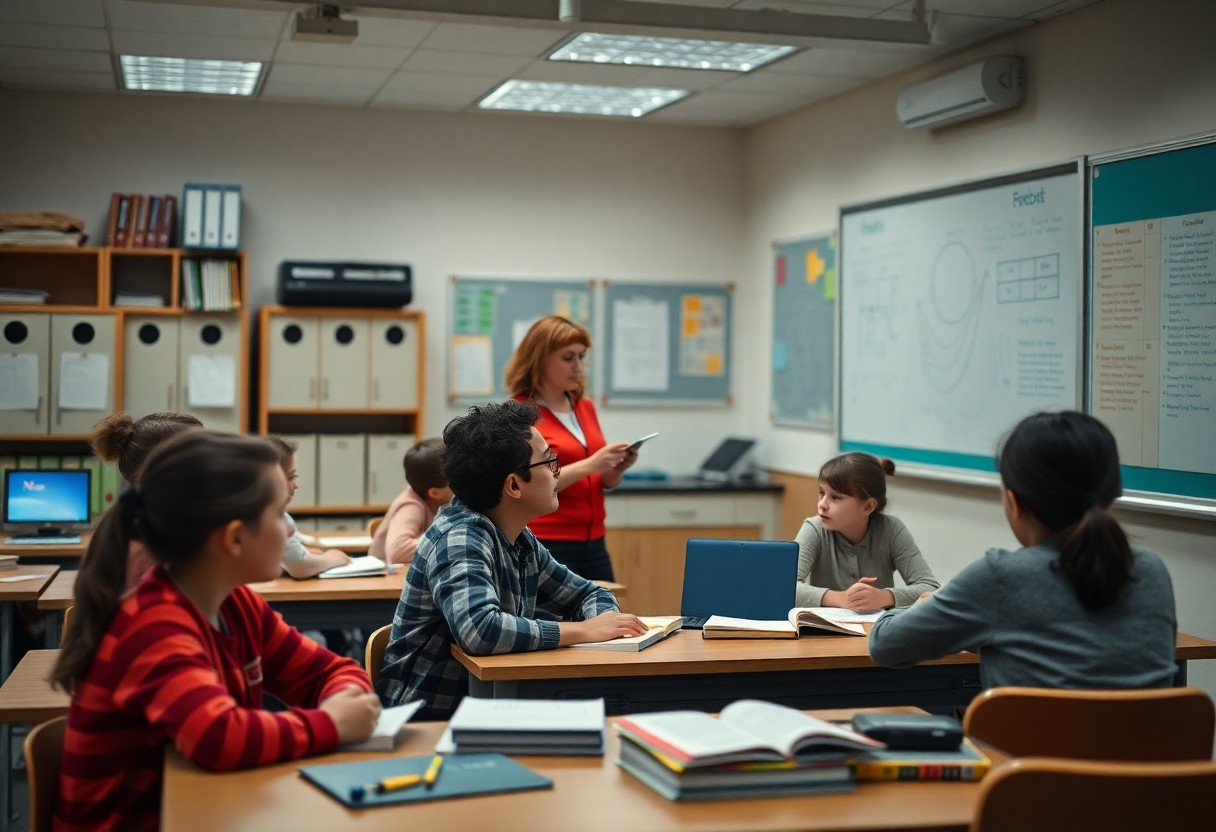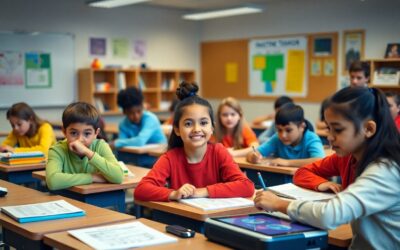There’s a growing recognition that personalised education strategies can significantly enhance your academic growth. By tailoring learning experiences to meet your individual needs, preferences, and strengths, you can unlock your potential and achieve better outcomes. In this blog post, you will discover effective approaches and techniques that can be easily implemented to create a more engaging and fruitful educational journey. Whether you are a student or an educator, exploring these strategies will empower you to take charge of your learning and foster long-term academic success.
Understanding Personalised Education
While many educational systems follow a one-size-fits-all approach, personalised education tailors learning experiences to individual student needs, interests, and abilities. This strategy emphasizes flexibility and engagement, allowing you to progress at your own pace and receive support specifically designed for you. By focusing on your strengths and challenges, personalised education fosters a more meaningful learning experience that maximizes academic growth.
Definition and Importance
One of the key elements of personalised education is its focus on tailoring instruction to fit your unique learning style. This approach acknowledges that every student is different and aims to provide a more effective and engaging educational experience. By prioritizing individual needs, personalised education plays a vital role in fostering your academic growth and overall success.
Key Components of Personalised Learning
Education that is personalised involves several key components, including tailored content, flexible assessments, and continuous feedback. These aspects allow you to set personal learning goals and track your progress, ensuring that your educational journey reflects your unique strengths and interests.
With personalised learning, you can benefit from multiple pathways tailored to your individual needs, such as varied instructional strategies and targeted resources. Flexible assessments allow you to demonstrate mastery in ways that suit your learning style. Continuous feedback provides the opportunity for adjustment and improvement, ensuring you’re always on the right track. Overall, these components work together to create a supportive environment that encourages you to take charge of your academic growth.
Strategies for Implementing Personalised Education
Even as educational institutions strive to meet diverse learning needs, implementing personalised education requires a multifaceted approach. Establishing clear goals, leveraging student data, and fostering a supportive environment are key components. You can start by identifying specific learning preferences and needs, creating flexible curricula, and encouraging collaboration among educators and stakeholders. This way, you can ensure that every student receives tailored support and truly benefits from their educational experience.
Differentiated Instruction
Against the traditional one-size-fits-all model, differentiated instruction tailors teaching methods and materials to accommodate varying student abilities and interests. This approach allows you to create multiple pathways for learning, ensuring that each student can engage with the content in a way that resonates with them. You can modify tasks, offer varied resources, and implement different assessment techniques that align with your students’ unique learning profiles.
Adaptive Learning Technologies
Behind the scenes, adaptive learning technologies are revolutionising personalised education by using algorithms and data analytics to tailor educational content to individual learners. These technologies can assess your students’ strengths and weaknesses in real-time, delivering customised resources and support based on their performance. With a focus on continuous feedback and engagement, adaptive learning creates a more dynamic and responsive educational environment.
To effectively utilise adaptive learning technologies, you can integrate platforms that analyze student data and modify the learning experience accordingly. These systems often offer a blend of assignments, quizzes, and instructional materials that adapt as students progress, providing targeted interventions when necessary. By harnessing the power of adaptive learning, you can create a more engaging and productive learning atmosphere that promotes continuous academic growth while catering to the unique needs of each student.

Assessing Student Needs
You must understand the unique needs of each student to develop effective personalized education strategies. By assessing these needs, you can identify gaps in knowledge, learning styles, and areas where additional support may be required. Tailoring your approach based on individual assessments will foster an environment conducive to academic growth and empower students to reach their full potential.
Diagnostic Assessments
Diagnostic assessments play a vital role in identifying students’ strengths and weaknesses. These assessments help you gather baseline data on their knowledge and skills, enabling you to tailor instruction accordingly. By conducting these evaluations at the beginning of a learning period, you gain insight into each student’s learning trajectory and can adjust your teaching methods to address their specific needs effectively.
Continuous Progress Monitoring
Student progress monitoring is an integral part of personalized education. It provides ongoing feedback on each learner’s development, allowing you to make timely adjustments to instruction when necessary. Regularly tracking progress ensures that students remain engaged and helps you identify any emerging challenges that may hinder their academic growth.
For instance, implementing weekly assessments or check-ins can give you real-time data about each student’s understanding of the material. This not only helps in identifying struggling students but also allows you to celebrate successes and adjust teaching strategies more responsively. By employing progress monitoring techniques, you create a dynamic educational experience that addresses individual learning paths and fosters sustained academic development.
Creating a Supportive Learning Environment
Once again, building a supportive learning environment is crucial for fostering academic growth. Such an environment encourages your students to take risks, ask questions, and express their thoughts freely. When you create an atmosphere of respect and understanding, students feel more confident in their abilities and are more willing to engage deeply with the material. Providing structure and resources while also allowing flexibility can help you tailor experiences that meet the diverse needs of your learners, setting a strong foundation for their educational journey.
Collaborative Learning Strategies
Against traditional methods of isolated study, collaborative learning strategies emphasize teamwork and communication. This approach allows you to encourage your students to work together, share knowledge, and solve problems collectively. By creating opportunities for group work, discussions, and peer feedback, you promote a sense of community in your classroom, helping students learn from one another and enhancing their understanding of the subject matter.
Fostering Student Independence
Learning to foster student independence not only builds confidence but also enhances critical thinking skills. As you encourage self-directed learning, you empower your students to take ownership of their educational experiences, develop problem-solving abilities, and cultivate a sense of responsibility for their own progress. This independence ultimately prepares them for challenges beyond the classroom.
For instance, you can provide your students with opportunities to set personal goals, choose their own learning paths, and engage in self-assessment. By giving them the tools and guidance to manage their learning, you enable them to reflect on their strengths and areas for improvement. Additionally, implementing strategies such as choice boards or independent research projects allows students to explore topics that resonate with them personally, making their educational experience more relevant and meaningful.
The Role of Educators and Stakeholders
Keep in mind that educators and stakeholders play a vital role in the success of personalized education strategies. Their collaboration fosters an environment where students thrive academically and socially. By implementing tailored approaches, you can make a significant impact on student growth, ensuring that each individual receives the support they need to excel. Engaging with all parties involved, including parents and community members, encourages a shared responsibility towards academic achievement.
Teacher Training and Development
Against the backdrop of evolving educational practices, ongoing teacher training and development are necessary. Educators must be equipped with the latest strategies and knowledge to effectively implement personalized learning experiences that cater to diverse student needs. By participating in professional development opportunities, you enhance your skills and become more adept at recognizing and addressing the unique learning styles present in your classroom.
Involvement of Parents and Community
By actively involving parents and community members in the educational process, you can create a supportive network that enhances student learning outcomes. Collaboration with these stakeholders fosters open communication channels, helping you to understand the different cultural backgrounds and needs of your students. Their participation also encourages a sense of belonging and accountability, making it easier for your students to reach their academic potential.
At the heart of this involvement is the idea that education extends beyond the classroom walls. Community programs, workshops, and parent-teacher meetings provide platforms for shared insights and insights that enrich students’ educational experiences. When you invite parents to participate in school activities, you cultivate a partnership that helps establish a holistic support system for your students. This connection not only empowers families but also encourages a more cohesive approach to education, thereby enhancing the overall learning environment.
Measuring Academic Growth
Not every student progresses at the same pace, making it necessary to implement effective methods for measuring academic growth. By tracking individualized data, you can identify strengths and weaknesses, allowing for tailored educational experiences. Utilizing tools such as assessments, feedback, and progress reports will help you understand the effectiveness of your personalized strategies, ultimately informing further adjustments to maximize impact.
Setting Goals and Benchmarks
Beside assessing your current skills, establishing concrete goals and benchmarks plays a vital role in measuring academic growth. By setting specific, achievable targets, you can create clear pathways for progress. These goals help in evaluating your advancement over defined periods, ensuring that you remain motivated and focused on your educational journey.
Evaluating Outcomes and Success Stories
At the core of measuring academic growth is the evaluation process, which sheds light on outcomes and celebrates success stories. By systematically reviewing your progress, you can identify what strategies have worked effectively, reinforcing positive learning experiences and frameworks.
Outcomes derived from your evaluations provide insights into the effectiveness of your personalized education strategies. By compiling success stories, you can see tangible evidence of growth and improvement, which can serve as motivation for both you and peers. Analyzing these results not only highlights areas where you thrived but also reveals adjustments needed for areas requiring further attention, ultimately enhancing your overall educational experience.
Summing up
Drawing together your experiences and insights, personalized education strategies tailored to your unique learning style can significantly enhance your academic growth. By assessing your strengths and areas for improvement, you can engage with targeted methods that resonate with your individual needs. This proactive approach not only fosters deeper understanding but also cultivates a sense of ownership in your educational journey, empowering you to reach your academic goals effectively.
FAQ
Q: What are personalised education strategies?
A: Personalised education strategies refer to tailored approaches in teaching that cater to the individual learning styles, strengths, and needs of each student. By assessing the unique characteristics of students, such as their interests, academic performance, and preferred learning methods, educators can create custom learning plans. These strategies may include differentiated instruction, flexible pacing, and varied assessment methods, all designed to enhance the student’s academic experience and support growth in their educational journey.
Q: How can personalised education strategies improve academic growth?
A: Personalised education strategies can significantly enhance academic growth by aligning education with the specific needs and interests of each student. When students engage with the material in a way that resonates with them, they are more likely to be motivated and invested in their learning. These strategies allow for immediate feedback and adjustments based on student performance, fostering a more supportive environment conducive to learning. Furthermore, by focusing on individual strengths and working through challenges at a pace that feels comfortable, students can build confidence and achieve their academic goals more effectively.
Q: What role do parents play in the implementation of personalised education strategies?
A: Parents play a vital role in the success of personalised education strategies by actively participating in their child’s educational journey. They can collaborate with teachers to provide insights about their child’s interests, learning styles, and any challenges they may encounter. Open communication between parents and educators helps in designing personalised plans that reflect the child’s goals and aspirations. Moreover, parents can reinforce the strategies at home by creating supportive learning environments and encouraging their children to pursue their academic interests, ultimately fostering a culture of growth and learning.




0 Comments